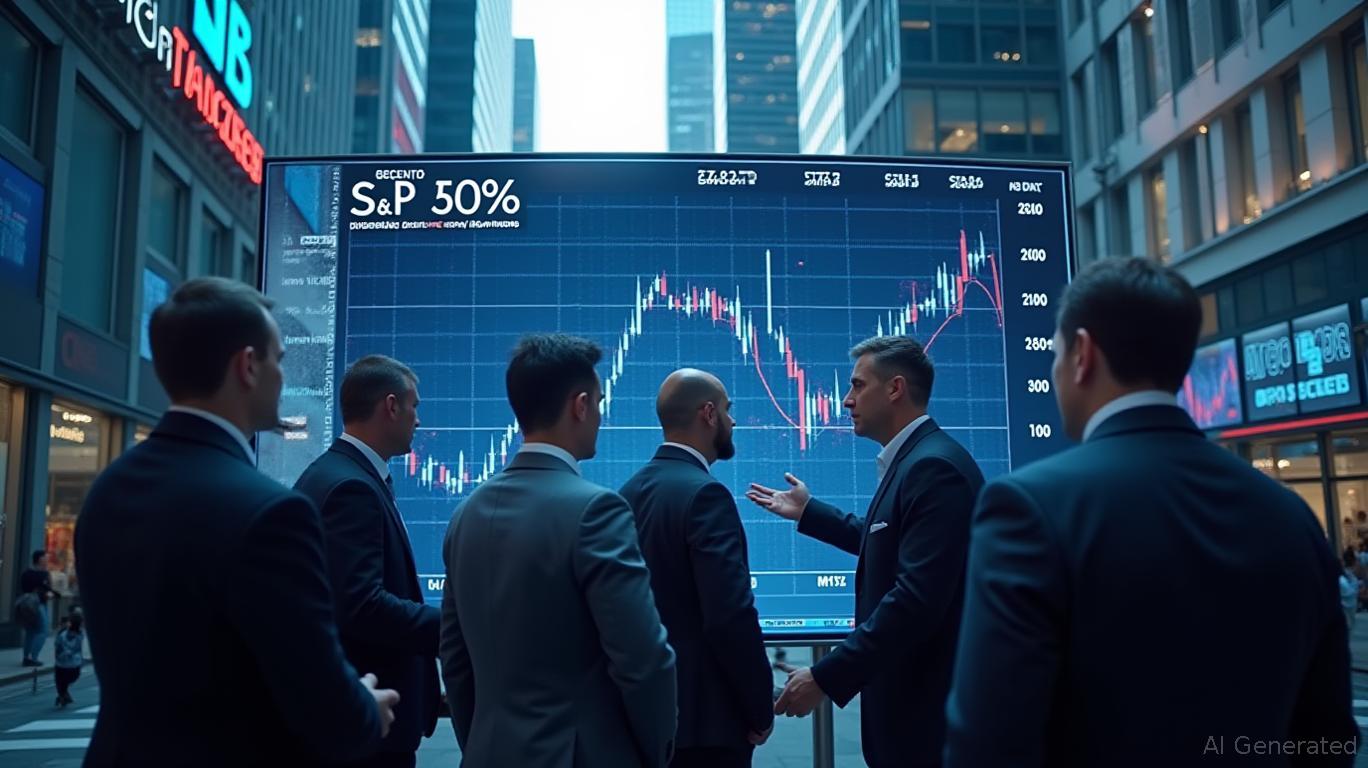Navigating Geopolitical Storms: How Defensives and Volatility Instruments Can Steer Through Q3 Market Turbulence
The Israel-Iran conflict has escalated dramatically in June 2025, with U.S. military strikes on Iranian nuclear facilities and Iranian retaliation targeting Israeli infrastructure. Meanwhile, unresolved fiscal policy debates in Washington have added to market uncertainty. This perfect storm of geopolitical and economic risks is poised to shape Q3 volatility—and investors can turn these headwinds into opportunities by focusing on defensive sectors and volatility-linked instruments.

The Geopolitical Gauge: Risks and Market Impacts
The U.S. strike on Iranian nuclear sites—coupled with Iran's threats to close the Strait of Hormuz—has reignited fears of a supply shock to global oil markets. Analysts warn that a prolonged disruption could push Brent crude to $120/barrel, destabilizing economies reliant on Middle Eastern oil.
- Energy Market Sensitivity: Even a partial closure of the Strait (a chokepoint for 20% of global oil exports) could add a $10–$30/barrel risk premium to oil prices. While U.S. shale production and OPEC's spare capacity provide some buffer, the market's “fragile resilience” leaves it vulnerable to further escalation.
- Geopolitical Fallout: The conflict has drawn condemnation from China and Russia, strained U.S.-EU alliances, and raised constitutional questions about unilateral military action. The U.S. faces domestic backlash over its bypassing of Congress—a factor that could delay future policy responses and deepen uncertainty.
Fiscal Policy Crossroads: The Fed's Delicate Dance
The Federal Reserve's June 2025 decision to hold rates steady, despite divided internal projections, underscores the tension between inflation and growth risks.
- Stagflation Risks: With core PCE inflation at 3.4% and unemployment claims rising, the Fed faces a dilemma: cutting rates risks reigniting inflation, while inaction could stall a slowing economy. Markets are pricing in a 50% chance of a 50-basis-point cut by mid-2026, but volatility will persist until clarity emerges.
- Market Implications: Cyclical sectors like industrials and tech are particularly vulnerable to this uncertainty. Semiconductor stocks, for instance, have already seen margin pressure as IT budgets shrink amid slowing demand.
Defensive Sectors: The Steady Hand in Turbulent Markets
Investors should prioritize sectors insulated from energy price swings and economic slowdowns:
- Utilities & Infrastructure:
- NextEra Energy (NEE) and Dominion Energy (D) offer stable cash flows from regulated assets and grid modernization projects.
Why now?: Utilities thrive in low-growth environments and benefit from inflation-linked rate hikes. Their low beta makes them ideal for volatility mitigation.
Consumer Staples:
- Procter & Gamble (PG) and Coca-Cola (KO) have strong pricing power and recession-resistant demand.
Key metric: P&G's net margins remain above 25%, even as discretionary spending weakens.
Healthcare & Pharmaceuticals:
- Johnson & Johnson (JNJ) and UnitedHealth (UNH) are insulated from macroeconomic cycles.
Data point: JNJ's dividend yield of 2.8% outperforms the S&P 500 average.
High-Dividend REITs:
- Healthcare REITs (HCN) and self-storage REITs (PSA) offer inflation hedges and stable income.
- Caveat: Monitor cap rate expansion risks in a rising-rate environment.
Volatility Instruments: Profiting from the Storm
Investors seeking to capitalize on—or hedge against—market swings should consider:
- VIX-Linked ETFs:
- ProShares Ultra VIX Short-Term Futures (UVXY) can profit from volatility spikes, though these are high-risk and best used for short-term trades.
Data query: UVXY's performance during the June 2025 geopolitical escalation.
Inverse Volatility ETFs:
VelocityShares Inverse VIX Short-Term (XIV) offers exposure to declining volatility, but requires careful timing.
Options Strategies:
- Buy put options on cyclical sectors (e.g., industrials) to hedge downside risks.
- Example: A put on Caterpillar (CAT) with a strike price at $200 could protect against a decline to $180.
Avoiding the Pitfalls
- Cyclical Sectors: Industrials (e.g., Caterpillar) and discretionary stocks (e.g., Amazon) face margin pressure from slowing demand and rising energy costs.
- Tech & Semiconductors: IT budget cuts and supply chain bottlenecks are weighing on Nvidia (NVDA) and ASML Holding (ASML).
Conclusion: Positioning for a Fragile Recovery
Investors must navigate Q3's volatility by balancing defensive allocations and strategic use of volatility instruments. Utilities, consumer staples, and high-yield fixed income provide stability, while VIX-linked ETFs can capitalize on geopolitical-driven swings. Avoid cyclical sectors until clarity emerges on oil prices and Fed policy.
The path forward is fraught with uncertainty, but history shows markets typically rebound within months of geopolitical shocks—as long as investors stay disciplined. The key is to prioritize income, diversification, and hedging tools to weather the storm.

Comments
No comments yet